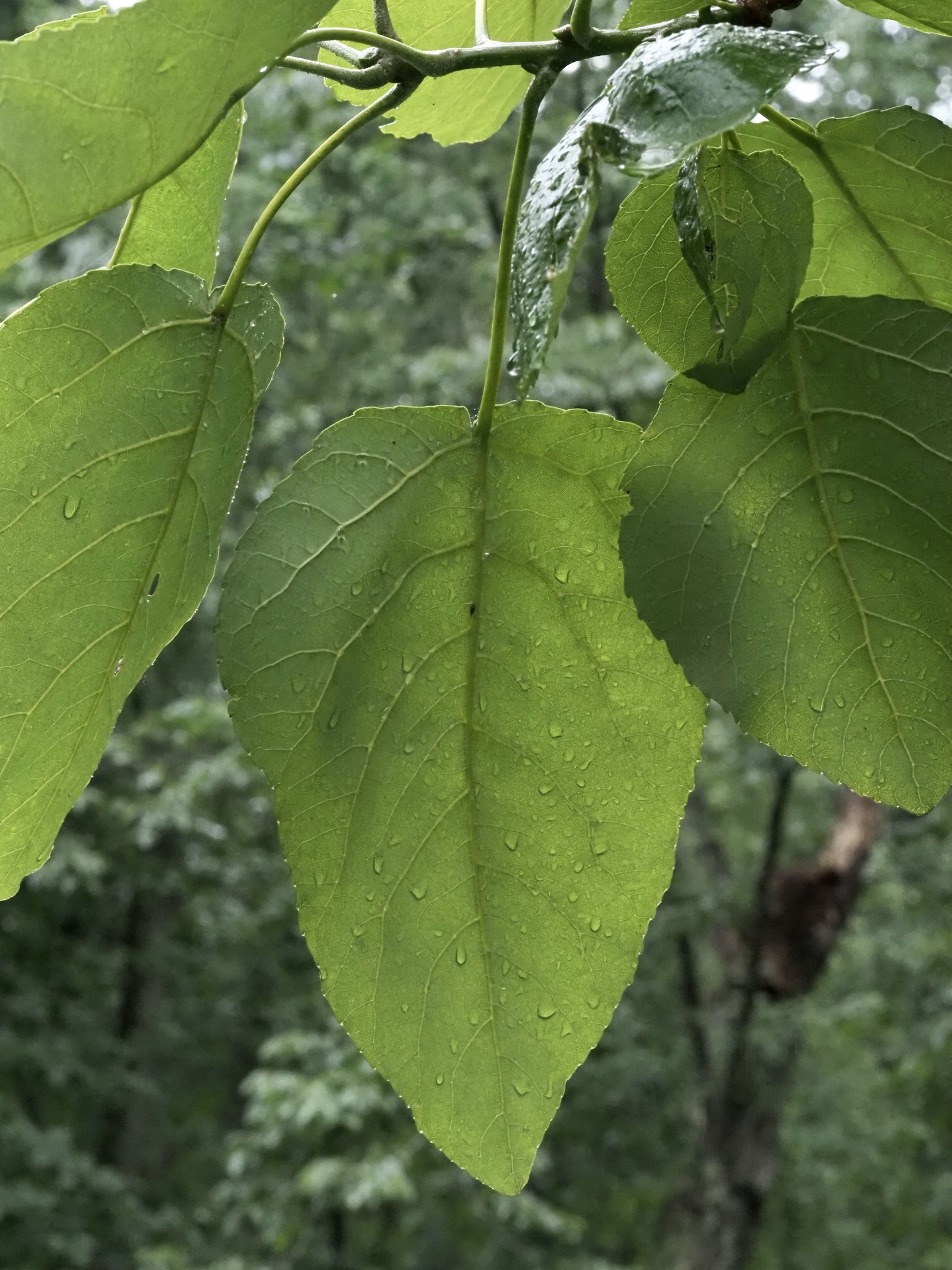Swamp Cottonwood
Populus heterophylla L.
Description
Swamp cottonwood is a member of the willow family (Salicaceae) and has several common names including downy poplar, black cottonwood, river cottonwood and swamp poplar ². It can grow to 130 feet with a 75 inch diameter, but most only reach 100 feet ². They grow rapidly but have a life expectancy of only around 80 years ². The bark is dark gray-brown with deep furrows and shaggy ridges ¹. The oval heart-shaped leaves are up to 6 inches long with serrate margins ². They have round petioles 6. Male and female flowers are in catkins found on separate plants (diocious) 5,6. Fruits are one inch long and turn brown when mature ². The seeds are carried in a downy fluff that the wind can carry for 100 yards. If the seeds land on water they can float for considerable distances ².

Bark of swamp cottonwood. J. Brightoin, Maryland Biodivertstiy Project ³
Leaves of swamp cottonwood. J. Brightoin, Maryland Biodivertstiy Project ³

Downy seeds of swamp cottonwood. Illinois Wildflowers 6
Distribution
Swamp cottonwood is an obligate wetland species and is often found in standing water 4. It may be found along the coastal plain in swamps and sloughs from Connecticut to Georgia and along the Mississippi River drainage from Ohio to Louisiana ². In Maryland it is largely found on the lower Eastern Shore in Wicomico and Worcester Counties ²

Native distribution of swamp cottonwood 7
Wildlife Importance
Little is reported on the wildlife value of swamp cottonwood. Like other cottonwoods, it is likely consumed by beavers.
Economic Importance
The most important use of swamp poplar is for high grade paper ². Its wood is of little value because it twists one dried. It can be made into crates and boxes ².
Threats
Because of its limited distribution and lack of use for cultivation, there are few reported disease or insect problems associated with swamp cottonwood. It is likely affected by the same leaf rust and canker diseases of eastern cottonwood 8.
Interesting Facts
- An extract of the roots can be used as a rooting hormone for starting other plants5.
References
- North Carolina State Extension: Populus heterophylla
- USDA Forest Service Silvics, Vol. 2, Hardwoods: Populus heterophylla
- Maryland Biodiversity Project: Swamp cottonwood
- Go Botany: Populus heterophylla
- Plants for a Future: Populus heterophylla
- Illinois Wildflowers: Swamp cottonwood
- Wikimedia Commons: Populus heterophylla
- University of Vermont Dendrology: Populous heterophylla
Contributed by J. Hull
